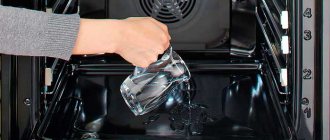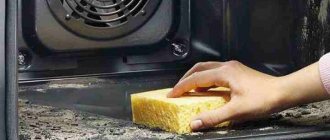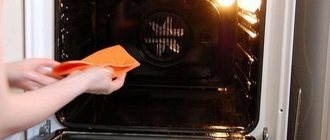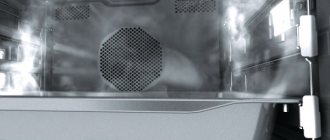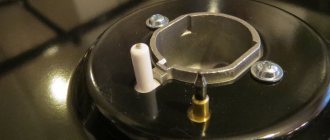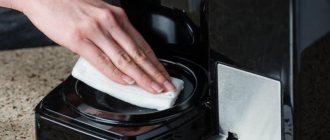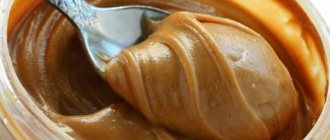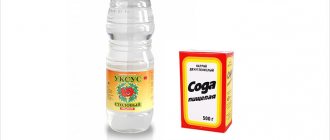Cooking food in the oven is accompanied by splashes of fat, juice and the formation of soot. They get on its side walls, ceiling and doors.
Considering that ovens are used primarily at high temperatures, dirt sticks to the surfaces, which are then difficult to clean.
Today, manufacturers offer pyrolytic ovens, and they seem magical. Ovens that are called self-cleaning really live up to expectations and are cleaned with minimal intervention from the owner.
What is pyrolytic oven cleaning, how does it happen, are all ovens pyrolytic by default? You will find answers to questions in the article.
Pyrolysis principle
A pyrolytic oven uses an approach similar to modern cars, which trap harmful exhaust particles and burn them to ashes at ultra-high temperatures.
The oven also burns scale and grease. It heats up to approximately 500°C, which chars the dirt and turns to ash. This process is called pyrolysis, hence the name.
Only electrical cabinets have this function , however, not all have it included in the package. With gas stoves, pyrolysis is impossible; they cannot be heated to such a high temperature.
If you often bake meat or vegetables, and especially using a grill, a pyrolytic oven is what should be in the house. This oven is also a godsend for people who are allergic to cleaning products. Or simply for those who are “allergic” to the cleaning itself.
Pyrolytic oven cleaning
The term “pyrolysis” in scientific language stands for the thermal separation of organic and inorganic chemical compounds, resulting in the formation of ash and gaseous compounds. This term is made up of two ancient Greek words: Pyr (πῦρ) - fire, heat, bonfire and Lysis (λύσις) - decay, decomposition, stratification. In simple words, the essence of pyrolytic cleaning means the combustion of any contamination that may have formed on the walls of the oven.
The pyrolysis method is so far the most advanced of all existing ones, and an oven equipped with such functionality can safely be classified as a Mercedes among ovens. The fact is that the use of increased temperature automatically means the use of more durable and resistant materials.
Every housewife knows that to prepare the bulk of baked goods, a temperature of 180-250 ° C is required, which means that pyrolysis must be carried out at much higher temperatures, for which standard ovens are simply not designed. Basically, most pyrolytic reactions occur at a temperature of about 500 ° C, although some oven manufacturers have been able to “make” this function work at 300 ° C, but this is not pyrolysis in its pure form, but only part of a multi-level cleaning system.
Since cleaning is carried out at high temperatures, all such ovens are equipped with additional thermal protection for the door and body so that the outside temperature is as low as possible. They are also equipped with a locking mechanism that does not allow the doors to be opened while the temperature inside is above two hundred degrees.
Carrying out the cleaning itself should not cause any difficulties for anyone: all the baking sheets are removed from the oven (in some models this is not necessary - the stands are also made of heat-resistant metal and can be cleaned in this way), the door is closed and the self-cleaning mode is turned on. When the pyrolysis process is completed, you need to wait a while to let the oven cool, after which you can simply sweep away the resulting ash with a brush or rag.
+ Advantages of the pyrolytic cleaning method
- This is in the full sense of the word “self-cleaning of the oven” without human intervention - all that is required is to start pyrolysis and then remove the ashes.
- It is almost impossible to buy a bad oven with a pyrolysis system - only high-quality crucible steel is used for them. Other materials will reveal themselves during the warranty period: the oven will simply “drive” - it will change its shape due to thermal expansion.
- The entire internal surface is cleaned, including the most inaccessible areas - even if the ash does not fall to the bottom from there, it will simply be blown away.
— Disadvantages of the pyrolytic cleaning method
- The use of high-quality materials proportionally increases the cost of the oven.
- Cleaning is carried out separately from food preparation. This means wasted time and additional energy consumption.
- The power of ovens with a pyrolysis system is higher than usual, so in any case you will have to run a separate line for it, designed for at least 6 kW.
- Pyrolysis produces a large amount of gaseous decomposition products, the removal of which requires a good ventilation system.
- Despite high-quality thermal protection, the surface of the oven and the door itself gets quite hot. Although their temperature does not exceed 70-80 °C, this is quite enough to get burned, especially for a child. Therefore, it is advisable that no one is in the kitchen during pyrolysis cleaning of the oven.
How is the oven cleaned?
Self-cleaning is easy to use and requires minimal effort. Before you turn on the automatic process, you need to do one thing - remove everything from the oven.
Need to pull out:
- grate,
- baking trays,
- spit roasting set,
- temperature probe and kitchen utensils.
Then simply select the desired program and the temperature will rise to 500 degrees. As soon as the function starts, the oven will lock the door and the process will begin. It usually lasts about 3 hours, but shorter programs are also available for minor stains.
During this time, the oven will heat up to very high temperatures necessary to burn all the substances inside and turn them into ash. Once the self-cleaning process is complete, the oven will take time to cool down and disengage the door lock. At the end, all that remains is to finish the job - wipe off the remaining ash with a damp cloth .
Under no circumstances should you clean the pyrolytic oven manually using abrasive substances, such as wire sponges, as they will scratch the special enamel layer. If it is damaged, it will no longer be possible to use the cleaning safely.
Security measures
What can harm the pyrolysis system in the oven:
- Ventilation openings must not be blocked.
- Do not cover the oven walls with foil.
- It is forbidden to place the baking sheet on the bottom, this will damage the enamel of the oven.
- The stove should only be used for its intended purpose.
A modern, diverse selection of stoves will allow you to choose exactly the one that suits your kitchen. An oven with pyrolysis will simplify the life of any housewife.
Friends will also be interested in this
Pros and cons of the method
Pyrolytic self-cleaning is easy to use and requires minimal effort. It is safe, since the ovens are equipped with mechanisms that prevent injury to users.
Pros:
- Perfect cleanliness. The mode provides complete cleaning, as it removes all stains - from fat, sauces and even baked-on sugar.
- Ease. After pyrolytic cleaning, the housewife simply needs to wipe off a thin layer of ash remaining from burnt dirt, and the oven will be spotlessly clean.
- Economical. You can run a cleaning program immediately after cooking to utilize the heat in the oven. You can save energy by adapting the program to the amount of dirt in the oven. If you clean frequently, shorter cycles will be required.
- Safety. The pyrolysis oven is equipped with a cooling fan and reinforced insulation. During cleaning, the temperature of the outside of the oven remains around 60°C and around 30°C when heated to 200°C. The door is always locked, so the risk of burns is very minimal.
Minuses:
High price. The heating method requires careful insulation and higher quality electrical equipment, which increases the price of the stoves.- Caring attitude. Internal surfaces should not be cleaned with hard cloths or abrasive powder.
- There are odors. During pyrolytic cleaning, a burning smell occurs; the kitchen should be well ventilated.
- Requires maintenance. If you use a household appliance for a long time or if the internal panels are damaged, they will have to be replaced with new ones.
Positive traits
The pyrolytic purification system has quite a lot of positive qualities. Compared to catalytic and hydrolysis technologies, this is considered more effective.
- No need to use detergents.
- Gets rid of the heaviest contaminants: fat, dairy products, burnt food, etc.
- Cleaning is carried out for the entire interior of the oven. All hard-to-reach areas of the oven chamber are cleaned.
- No additional costs for materials are required: the electric oven has all safety and ventilation systems.
Alternative systems
The pyrolysis method is the most effective for cleaning dirty ovens, but kitchen appliances with other cleaning technologies are now available. Each has its own strengths and weaknesses.
Catalytic furnaces
Ovens with catalytic cleaning can be recognized by their porous inner walls, which are rough to the touch . Pores in enamel or ceramic panels absorb grease from food. In the pores, splashes of grease and other contaminants are destroyed by oxidation at temperatures above 200°C.
The advantages of this method include the speed of cleaning; the device can be cleaned by turning it on for 10–15 minutes after each use. Also, catalytic furnaces are cheaper than pyrolytic ones.
But the catalytic furnace does not always clean heavy stains and they have to be removed manually with a sponge and degreaser. In this case, abrasive or soapy substances cause irreparable damage, porous surfaces lose their properties and require replacement.
Hydrolytic
Ovens with a hydrolysis function are cleaned with steam . It would seem that this is a simple, quick and environmentally friendly remedy.
It is based on the “steam bath” effect, combining evaporation and condensation. The scale on the walls becomes soft and comes off easily, making cleaning the oven easier.
Hydrolysis is economical and does not require large amounts of energy. But it is not automated, after which the equipment still has to be cleaned by hand, and most importantly, the cleaning procedure must be carried out after each cooking. Read about hydrolysis oven cleaning here.
Precautionary measures
When using a pyrolytic cleaning system, follow these rules:
- The equipment is intended only for cooking. It is prohibited to use the device for drying mushrooms, herbs, or heating the room.
- Do not cover the sides and bottom of the inner chamber with aluminum foil.
- Do not block the ventilation openings.
- Do not place baking sheets on the bottom of the oven. This damages the enamel and prevents normal air circulation.
- Do not place dishes on an open door.
Compliance with these measures will extend the life of the device and improve the quality of its cleaning.
Tips for use
Here are some general oven cleaning tips that users should be aware of:
- Before you start cleaning, be sure to unplug the equipment from the power supply.
- Before cleaning, make sure you allow enough time for it to cool to remove the ash.
- It would be a good idea to get into the habit of using the pyrolytic self-cleaning function after every 10th cooking time.
- Sometimes the frequency of cleaning can be changed, depending on how dirty the oven is or the length of the previous cleaning cycle. Some ovens have the option of choosing a 120-minute cycle or an Eco cycle, which lasts 90 minutes.
Expenses
The price for this type of equipment is high, and the energy costs are also quite high, but you are completely spared (especially if you have a model with heat-resistant baking trays) from cleaning up greasy deposits. Over many years of using the device, you will save a significant amount on detergents and washcloths. Also, household chemicals will not have a harmful effect on you and your loved ones.
Due to their high quality, these devices rarely break down, and there is no need to buy any parts or change panels as is the case with catalytic plates. Filters are designed to last the entire service life of the equipment; some manufacturers use catalytic self-cleaning filters; in other models, they are removed from time to time and washed by hand.

